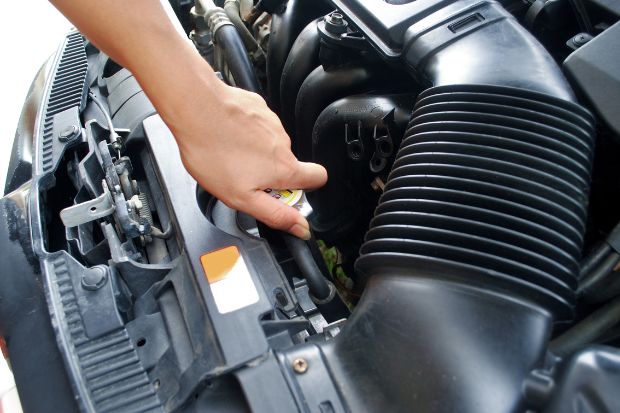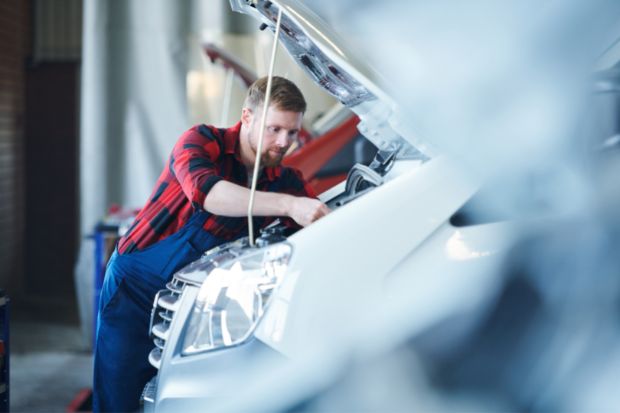Why a regular maintenance service is necessary for your car?...
5 Things Radiators Do In Your Car That You Never Knew About

A car radiator is a device that sits on top of the engine and provides a vital service to the engine. It keeps it cool by absorbing heat from the engine, then releasing it into the air. Your car’s radiator needs regular maintenance to ensure its longevity and efficient performance. Here are five things you should know about your car’s radiator:
Radiator and steam radiator
Radiators are used to cool the engine and transfer heat from it. This is done by circulating water through the radiator, which absorbs heat from inside your car’s engine. When you turn on your engine, this creates a lot of steam in your radiator which can be dangerous if not handled correctly!
Steam radiators were once common in older cars but have been replaced by more efficient design methods such as electric cooling fans or water pumps instead.
The radiator cools the hot engine coolant.
The heat from your car’s engine travels through a network of pipes and tubes that transfer it from one part of your car to another. When you turn on your engine, this heat is transferred through these pipes and tubes until it reaches its destination – in this case, your radiator. The radiator then absorbs this heat into itself before sending it back out again as part of its function: cooling down the surrounding air around your vehicle so that you don’t get burned when you start driving or parking outside in the summertime.
Radiator fan
The radiator fan is a small electric motor that turns on when the engine is running, helping to keep it cool by blowing air over the radiator. It’s controlled by a temperature sensor and can be controlled either by computer or manually.
In some cars, like most modern ones, you don’t need to worry about this part at all because your car will automatically turn it on when you start driving…
Heater core
The heater core is a heat exchanger, which means it’s used to transfer heat from one fluid to another. It’s located in the engine compartment and can be found below your car’s hood. This piece of machinery has several different functions:
- It heats up coolant in order to keep your car running at optimal temperatures.
- It also transfers heat from hot gases inside the engine bay back into your vehicle via an electric pump (which is why your heater does not work when you don’t have any power).
Water pump
The water pump is the device that helps to keep your car cool. It pumps the coolant from the system through the radiator and engine block, while also removing heat from them. If it breaks, you will need to replace it with a new one.
Anti-freeze, engine coolant, and distilled water
Antifreeze is a mixture of water and ethylene glycol. Ethylene glycol is toxic, so it’s important you don’t confuse antifreeze with antifreeze coolant. The latter is an alternative to distilled water that can be used instead of the usual methylATED (methylated spirit) in your car’s radiator system.
Antifreeze prevents freezing by keeping the water close to its boiling point, which makes it less likely for ice crystals to form in your engine block—which would damage any part of your engine or cause serious issues such as overheating due to lack of lubrication between moving parts like pistons or gears inside an engine block.
If there isn’t enough antifreeze present when temperatures drop below freezing point outside then this could result in serious damage being caused by corrosion on metal surfaces within these components; this includes things like oil seals which are exposed during operation at lower temperatures than those normally seen during operation at higher temperatures (such as during summer months).
A car radiator provides an important service to your engine.
The radiator provides an important service to your engine. A car’s radiator cools the hot engine coolant, which is usually water and helps circulate it through your vehicle to keep it from overheating. It also blows air through the radiator so that it can be cooled as well, by passing through a fan or two (or more).
The heater core does the same thing for another purpose: keeping your interior warm! You might have noticed that when you turn on your car’s heater in wintertime or have been stuck sitting in traffic with no AC on full blast all day long—it gets cold inside quickly! This is because there’s no airflow over these areas because they are sealed off from outside airflow by glass windows or plastic panels between them and the outside world (this happens even in cars where there aren’t any windows at all).
Conclusion
Radiators are a lot more than just cooling mechanisms. They serve many different functions in your car, and if you want to keep your engine running smoothly you should have one installed.
Popular Searches
Audi Windshield Replacement in Santa Clara County
Auto Car Window Tinting in Santa Clara County
Auto Glass Repair and Replacement in Santa Clara County
Auto Glass Repair in Santa Clara County
BMW Windshield Chip Repair in Santa Clara County
BMW Windshield Repair and Replacement Services in Santa Clara County
Car Window Repair in santa clara
Car Window Repair in Santa Clara County
Commercial truck windshield replacement
Dodge Windshield Repair and Replacement Services in Santa Clara County
Dodge Windshield Replacement in Santa Clara County
Glass repairs for cars near me
Honda pilot windshield replacement cost
Honda Windshield Repair and Replacement Services in Santa Clara County
Honda Windshield Replacement in Santa Clara County
Hyundai Tucson windshield replacement
Hyundai Windshield Repair and Replacement Services in Santa Clara County
Hyundai Windshield Replacement in Santa Clara County
Jeep Windshield Repair and Replacement Services in Santa Clara County
Jeep Wrangler Windshield Replacement in Santa Clara County
Kia Windshield Repair and Replacement Services in Santa Clara County
Kia Windshield Replacement in Santa Clara County
Mobile Auto Glass in Santa Clara County
Mobile Auto Glass Repair in Santa Clara County
Mobile glass replacement near me
Same day windshield repair near me
Toyota Camry side mirror glass replacement
Windshield Calibration in Santa Clara County
Windshield Chip Repair in Santa Clara County
Windshield chip repair near me
Windshield Repair and Replacement Services in Santa Clara County
Windshield Repair and Replacement Services Near Me
Windshield Repair in Santa Clara County
Windshield repair service near me
Windshield Replacement Near Me
Windshield Replacement Services in Santa Clara County
Read more Articles
Things You Didn’t Know About Windshield Humidity Sensors
Things You Didn’t Know About Windshield Humidity Sensors If you’ve...
Advanced Driver Assistance Systems: A Complete Guide
Advanced Driver Assistance Systems: A Complete Guide Driving is a...



